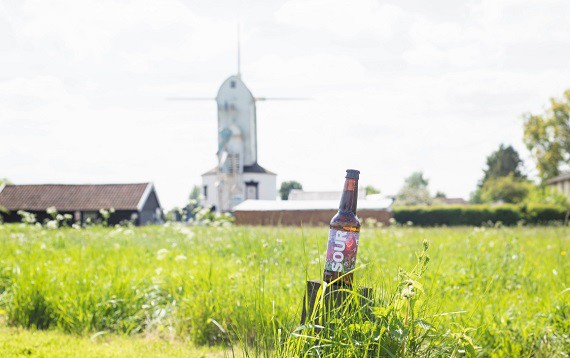__________________________________________
IN A BRAND NEW TASTING room in the north of Scotland, James Watt takes a sip from his glass, glances down at a warehouse filled with oak casks and murmurs the words “four-and-a-half million”. I almost gag on my beer. The managing director of Brewdog has just confirmed that his company has spent £4.5 million on this new unit and – get this – it will only produce sour beers. If you’ve ever needed evidence of how the beer world has been turned on its head, this is it.
Twenty years ago, the last thing most customers would have wanted in a pub or bar was a sour beer. To the lay person, a sour taste is a clear indication that something is not right with a beer. More scientifically, it reveals that the beer has been turned acidic, probably through the intervention of wild yeast strains or bacteria, and in most styles of beer that is, of course, entirely inappropriate. But that’s not to say there hasn’t ever been a market for sour beers.
In the early 19th century, many beers would have been sour and acidic, simply because brewing science and practices were imprecise, allowing rogue yeast strains and other microflora to invade the beer, especially those beers such as porter that were aged in oak tuns for several months. These faults were largely eliminated through the work of yeast specialists such as Louis Pasteur and Carlsberg’s Emil Christian Hansen, but the souring effect of wild yeasts, friendly bacteria and wood ageing continued to be cherished by a small cohort of beer drinkers long after these scientific advances.
In a rural area to the south west of Brussels, farmhouse brewing traditions lingered on, creating spontaneously fermented beers known as lambics. These complex, often beguiling beers are exposed to wild yeasts and bacteria at an early stage, as the wort – the sugary liquid created by soaking malted barley in hot water – is cooled overnight in large shallow vats called coolships. The acid-forming intruders then ferment the liquid as it ages in wooden casks over a period of months. The resulting beers are rather flat, sharp and vinous but they are often skilfully blended, sometimes with a vibrant younger version, to produce a sparkling drink known as gueuze, which can taste like a bone-dry, tart and acidic champagne. Fruit may also be added to create kriek (made with cherries) or frambozen (raspberries), for instance – the fruit not just flavouring the drink but introducing new sugars and wild yeasts for yet more fermentation.
Elsewhere in Belgium, different types of sour beer survived. The Flanders red and oud bruin (old brown) styles are essentially conventional red or brown ales aged in ancient oak vats to allow microflora that have been long resident in the wood to work their magic. Brewing names such as Rodenbach, Verhaeghe and Liefmans are still celebrated by enthusiasts. In Germany, too, sour beer clung on – just. The best-known example is the Berliner weisse, produced not by wood ageing or wild yeasts but by allowing Lactobacillus bacteria to acidify the beer during the brewing process. It is such a sharp-tasting drink that the locals add a fruit or herb syrup to take away the edge. Meanwhile, gose – a beer local to the Leipzig area – was made like Berliner weisse with acidifying bacteria but then, curiously, laced with coriander and salt. This style did actually die out but has now been resurrected, Jurussic Park-style, by brewers local and international.




